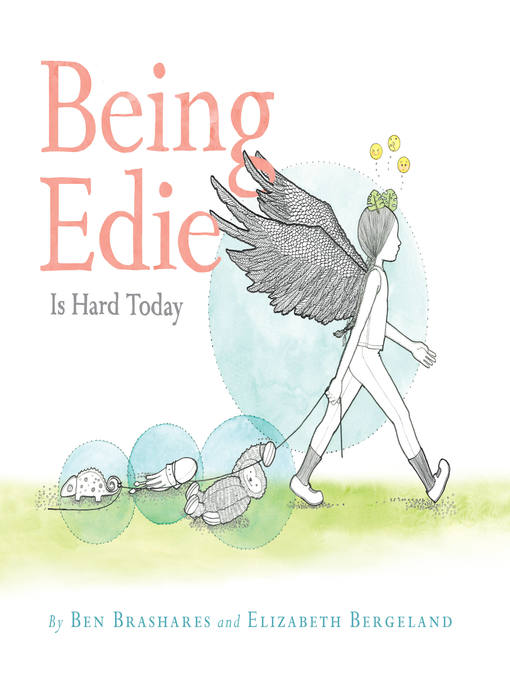
Being Edie Is Hard Today
کتاب های مرتبط
- اطلاعات
- نقد و بررسی
- دیدگاه کاربران
نقد و بررسی

March 1, 2019
Some days are hard, so Edie borrows some animal traits to get through.Edie doesn't want to go to school, and as soon as she boards the bus, the reason why becomes clear: Edie is bullied and feels lonely. She copes by imagining herself as other animals, her wistful "Oh, to be a squid" summing up her alienation. She is depicted with leaf antennae all day long while other classmates sport different animal features. She tries to take action as a cheetah against an antelope-horned classmate, but her efforts send her to the principal's office. At home, Edie finally admits the truth to her mom, releasing her emotions. The text shows one explicit instance of name-calling, and readers can intuit Edie's loneliness at school from her many solo activities and disengagement. Bergeland's 1970s-style pencil-and-watercolor pictures in a mostly pastel color palette spectacularly capture wishful quietness with lots of negative space, expanding to rich, natural spreads at emotional high points. The characters all have skin the white of the blank paper, but differences in hair texture suggest racial differences (Edie's hair is long and straight). Often, emojis hover above the characters, providing some evidence of personality beyond body language. At the climax, faceless characters receive facial features for a deeper view of their inner worlds. Edie's plight is identifiable to anyone who's ever been bullied or who sometimes finds everyday life a bit of a struggle. (Picture book. 5-8)
COPYRIGHT(2019) Kirkus Reviews, ALL RIGHTS RESERVED.

June 3, 2019
In an empathic, artful story, a child wishes she could transform into something other than herself. Edie wears two spriglike leaves on the top of her head, almost like ears, and takes on the characteristics of various animals throughout the school day. When her teacher asks her to write on the board, Edie explains why she can’t: “I have polar bear hands.” When she eats sardines at recess, other kids tease her, calling her a “stinky squid”; in the following spread, Edie wistfully imagines herself as a pink squid, tentacles encircling her classmates’ ship (“Oh, to be a squid”). Bergeland illustrates in intricate pencil lines paired with bursts of pale color,
providing the story a gently surreal, melancholy atmosphere. Readers will observe that other students have animal features—
a tail here, a pair of antlers there. The addition of emoji-style faces hovering above the characters’ blank faces can feel duplicative but often gives voice to the blank-faced figures’ inner emotions—the strangeness of the day and the relatable feeling of wanting to disappear into a new identity more than speaks for itself. Ages 4–8.

May 10, 2019
Gr 1-3-Edie, a girl with long hair and green leaves stuck in her tresses like antenna, just can't face going to school today. There's no specific reason given, she just feels overwhelmed and antisocial. Her day does not improve by pushing through her feelings, and she imagines herself as a series of different animals whose characteristics might help. After being teased about her snack choice (sardines), she imagines herself to be a cheetah, and gets her revenge on a bullying antelope. "During her rather long trip to the principal's office, Edie tried to explain the slow-moving characteristics of a sloth, but Ms. Meany wasn't listening." Back home, a good cry and a talk with her mother lets her recharge and feel ready to face the next day as herself. From the beginning, the illustrations indicate Edie's world of fantasy-circles of delicate watercolor behind finely detailed black and white pencil vignettes create literal bubbles for Edie to exist in and give the barest hint of her actual environment. For the first two thirds of the story, all the people are shown in profile with blank faces. Instead of facial features, one or more emoji float above their heads indicating their inner state of mind and adding a sophisticated layer of visual literacy to the presentation. VERDICT An interesting and subtle story about feelings and anxiety for elementary students.-Anna Haase Krueger, Ramsey County Library, MN
Copyright 2019 School Library Journal, LLC Used with permission.

Starred review from April 1, 2019
Grades K-2 *Starred Review* In Edie's world, there is fantasy and there is reality. She chooses the wrong hairstyle, is teased by her classmates, and can't answer the teacher's question. When these real-life problems hit, she responds with her vivid imagination: she turns into a bat and hides in her cubby, or a squid who enjoys her sardines, or a cheetah who enacts revenge (subsequently, she is dragged to the principal's office, where she hopes to become a chameleon). At home, she nibbles at her dinner like a butterfly and moves like a worm at bedtime. But it is her mother's love that reminds her that being Edie is more than just all right. With that reminder, Edie, who, in Bergeland's pencil-and-watercolor illustrations, has been faceless all day, becomes a bright-eyed (mostly) human child. The careful illustrations focus on the human-animal overlap, with a yellow emoji face highlighting the emotions that Edie experiences. There is almost no color or background, except for some rich moments in Edie's imagination, which are particularly vibrant when she is at home in conversation with her mother. The opening end pages show Edie in a black-and-white desert; the final ones, a contented, angelic Edie in a green garden with the animals of her imagination.(Reprinted with permission of Booklist, copyright 2019, American Library Association.)

























دیدگاه کاربران